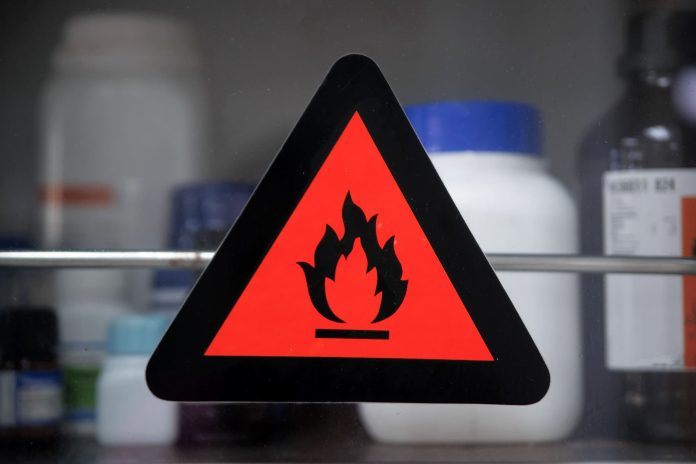There are plenty of workplaces that contain hazardous substances, and employees have to work with them. They deal with plenty of risks and require considerable risk aversion measures to be able to work safely.
In this blog, we will be discussing these hazardous substances and how to prevent exposure to them at work.
Table of Contents
What are Hazardous Substances?
Hazardous substances are materials that are dangerous or potentially harmful to people, animals, or the environment. These substances can take many forms, including chemicals, gases, fumes, dust, and fibres.
Where are Hazardous Substances Found?
They can be found in many different workplaces, from factories and warehouses to offices and schools. Employers need to identify and control any hazardous substances in the workplace to protect workers and others from harm. Some common examples of hazardous substances include asbestos, lead, mercury, and certain types of chemicals.
What are the Effects of Exposure to these Dangerous Materials?
Exposure to hazardous substances in the workplace can have a range of dangerous effects on workers’ health. Depending on the substance and the level of exposure, these effects can include irritation or burns to the skin and eyes, difficulty breathing, headaches, dizziness, and other symptoms. In some cases, exposure to hazardous substances can lead to long-term health effects such as cancer or other serious illnesses.
What Can Organizations Do to Prevent Hazardous Substance Exposure?
Employers need to take steps to protect their employees from exposure to hazardous substances, and for workers to be aware of the potential dangers and take precautions to protect themselves.
Exposure to hazardous substances at work can lead to serious health problems, including respiratory issues, skin irritation, and even cancer. To prevent exposure to hazardous substances, follow these steps:
-
Identify the hazardous substances in your workplace:
Your employer should provide you with a list of all hazardous substances used in the workplace. Familiarize yourself with this list and be aware of the potential risks associated with each substance.
-
Use Appropriate Personal Protective Equipment (PPE):
Depending on the type of hazardous substance you are working with, you may need to wear gloves, a face mask, protective eyewear, or other PPE. Always use the appropriate PPE and make sure it is in good condition before using it.
-
Avoid the Use of Hazardous Substances in the First Place:
One particularly effective method is to first consider if the use of hazardous substances is even necessary in the first place. It is also possible to replace a hazardous substance with another, less toxic or harmful material. For example, in any cleaning work, substituting chlorine solvents for cleaning detergents can reduce the use of harmful substances.
-
Follow Safety Procedures:
Your employer should provide you with safety procedures for working with hazardous substances. Follow these procedures carefully to reduce your risk of exposure. This may include things like proper handling and storage of hazardous substances, as well as proper disposal of any waste materials. A key method to doing this is to isolate the harmful substances from each other or to separate hazardous substances from regular stored items.
-
Avoid Skin and Eye Contact:
Many hazardous substances can be absorbed through the skin or eyes, so it’s important to avoid direct contact with them whenever possible. Use tongs or other tools to handle hazardous substances, and avoid touching your face or rubbing your eyes while working with them.
-
Use Ventilation:
If possible, work in a well-ventilated area to reduce your exposure to hazardous substances. If you are working with a substance that gives off fumes, make sure there is adequate ventilation to remove the fumes from the area. This also includes having separate ventilation for them to ensure that any potential toxicity in the air does not get mixed in.
-
Use Safety Data Sheets and Other Records:
The Occupational Health and Safety Regulations dictate that if there are any hazardous substances used in the workplace, proper records need to be maintained of them. These records include Safety Data Sheets (SDSs), risk assessment reports, air, and environmental tests, employee health monitoring, and more.
-
Proper Safety Labelling is Also a Must:
Safety regulations also require manufacturers to properly label all hazardous substances and provide appropriate warning labels and SDSs on the substances used.
-
Proper Training on Handling Hazardous Substances:
All employees working with substance need to be provided with ample training on how to handle them safely. As an example, COSHH training provides helpful insight into handling hazardous substances to avoid both short and long-term negative effects.
Conclusion
Hazardous substances are all across workplaces, especially industrial areas and manufacturing. Employees need dependable safety and risk aversion measures to prevent exposure to them. In this blog, we discussed some general effects of exposure to hazardous substances, as well as how to prevent them.
















